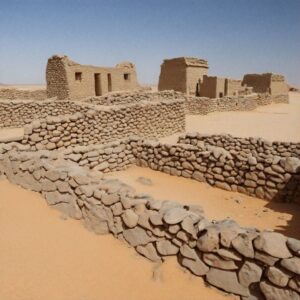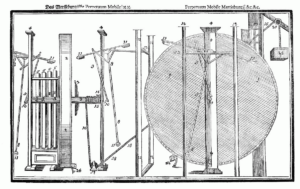The Golden Age of Piracy (1650-1730) was a tumultuous period in maritime history. The Caribbean Sea, Atlantic, Pacific, and Indian Oceans saw many years of geopolitical chaos as a result of European conflicts. Several notorious names emerged and made their mark by plundering ships and burying treasures in secret locations.
One of these intriguing figures was Olivier Levasseur, who supposedly hid one of the richest pirate stashes of all time in the Seychelles islands.
Background
A few sources paint Olivier Levasseur as the son of a pirate, but most agree that he actually came from well-to-do beginnings. He was born in Calais in 1688, was literate, and had a career in the navy.
He became a privateer during the War of Spanish Succession, raiding enemy ships for the French throughout the Caribbean. During this time, his priorities shifted. Rather than serve his government, he chose to plunder on his own behalf. He accumulated obscene amounts of wealth along the way. His exploits were legendary, earning him the nickname La Buse — “The Buzzard.”

Stone structures at the Levasseur excavation site on Bel Ombre Beach in Seychelles. Photo: Slimstyl/Shutterstock
He partnered up with other pirates such as Samuel Bellamy, aka Black Sam, as well as Henry Jennings, Edward England, and possibly Edward Teach — the notorious Blackbeard. He worked for a pirate company headed by Benjamin Hornigold in 1716 but went solo and raided off the West African coast as well as Madagascar.
In his greatest raid, he seized a Portuguese ship called the Nossa Senhora do Cabo. It carried gold, silver, precious stones, chests of guineas, silks, and the iconic Flaming Cross of Goa, a two-meter-high icon encrusted with precious jewels.
Levasseur and his partners divided the loot among themselves. After such an achievement, Levasseur tried to retire legally under an amnesty agreement with the French government. However, the conditions set were less than satisfactory. The government ordered him to give up the treasure. Instead, he stowed it away in the Seychelles. Not long after, authorities arrested and hanged him in July 1730.
A treasure hunt begins
His execution launched a treasure hunt that continues to this day. He supposedly threw his necklace to the crowd shouting, “Find my treasure ye who may understand it!”
This necklace allegedly held a small piece of parchment or cloth containing a cryptogram of clues about his treasure’s location. The necklace’s location is unknown. Currently, the treasure is said to be worth over four billion dollars.
Cryptograms, masons, and pigeons, oh my!
This is where things get confusing, not because the cryptogram is unbreakable, but rather because it was solved relatively easily. In 1934, French historian Charles de la Ronciere broke the code in his book, Le Flibustier Mystérieux: Histoire d’un Trésor Caché. The 17-line cryptogram turned out to be a pigpen cipher, which was frequently used by the Knights Templar and Freemasons.
However, the decrypted text did not reveal any details about the treasure or its location. Strangely, it was a recipe. For example, one line mentions cooking pigeons and taking out their hearts.

Levasseur’s cryptogram. Photo: Bibliothèque Nationale
Decades later, a second cryptogram appeared on the scene, but it turned out to be a fake.
Evidence and theories
In 1923, a widow named Rose Savouy came across a series of rock carvings at Bel Ombre Beach on Mahé Island in the Seychelles. These carvings included pictures of a dog, snake, horse, turtle, a woman’s body, a man’s head, two interlocking hearts, and other random images. A public notary became involved, and further investigation found a map stating that Bel Ombre Beach belonged to someone named — drum roll, please — La Buse.
Savouy recruited a team to help her discover more. Lo and behold, they found the remains of a man and woman who are believed to have been pirates. Their connection to Levasseur is unknown, but it confirmed pirate activity in the area.

Pirate ship at sunset. Photo: Shutterstock
Le Butin
The notary also found a will from the pirate Bernadin Nageon de L’Estang, aka le Butin. He had operated in the Indian Ocean in the late 1700s. The will mentions the locations of hidden treasures throughout the Indian Ocean.
Supposedly, L’Estang came into possession of several documents, including three cryptograms and two letters which are said to reveal their locations. He then passed this information on to his nephew in his will.
Many enthusiasts draw a parallel between L’Estang’s treasures and Levasseur’s, due to their shared use of cryptograms and the overlap of islands relevant to both of them in the Indian Ocean. Was L’Estang a possible owner of Levasseur’s vast wealth?
In 1947, a man named Reginald Cruise-Wilkins stumbled across the mystery while recovering from malaria in the Seychelles. He spent the rest of his life trying to find Levasseur’s treasure. He believes the cryptogram contains connections to Greek mythology, including the Twelve Labors of Hercules.
Searching in a cave on Mahé, he found artifacts like guns, a pirate’s sarcophagus, and coins, but hardly four billion dollars worth. His son John took up the search after his father’s death. So far, he has not found the loot. Other treasure hunters who searched the island found similar artifacts, which also serve as evidence of pirate activity.
What now?
Based on reports, Levasseur had a tendency to be fickle. He often changed his name when speaking to people and he frequently turned against colleagues. This makes it possible that the treasure never existed. He might have created this rumor as a last hurrah before his execution. But it does not explain why he would go out of his way to create such an elaborate cryptogram before his death, if he even made it at all.
If he did, maybe the real clues became lost in translation over the years. Messages can easily be taken out of context. References from one era may be lost in another. Some believe that the cryptogram we have today is a poorly translated copy of the original. This would make sense since the decoded message seems to bear no connection to the pirate.
In 2021, John Cruise-Wilkins was searching the northern parts of the island. If he discovered anything, no doubt we’ll hear about it, eventually.






